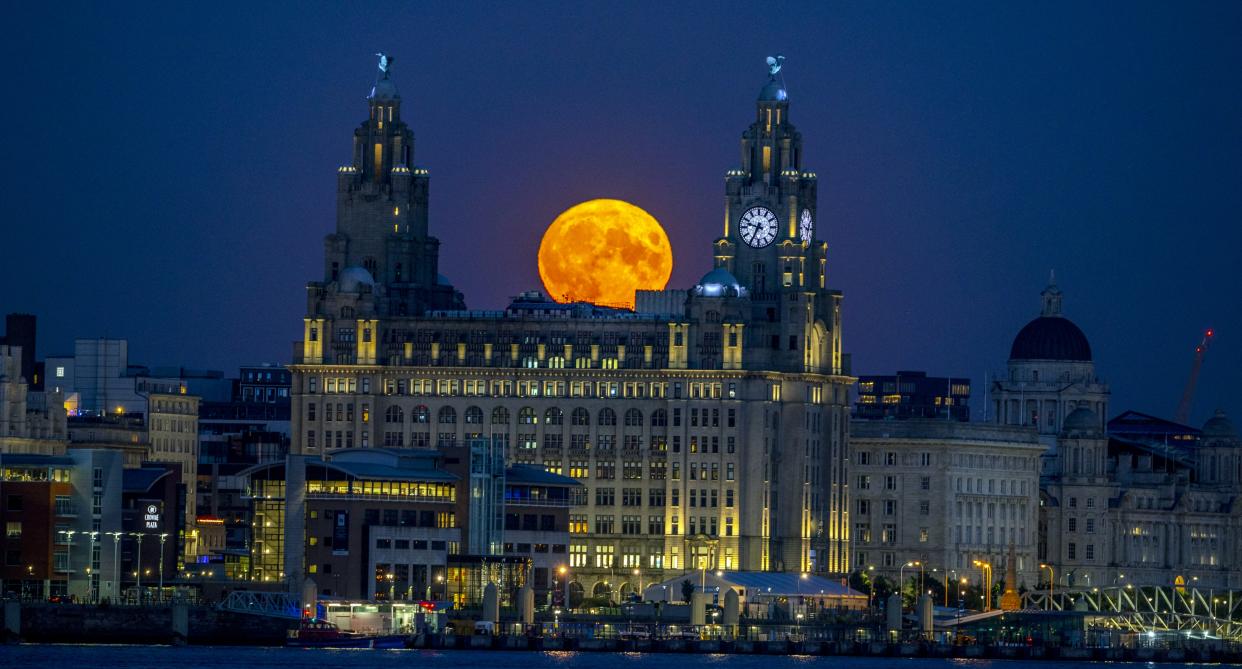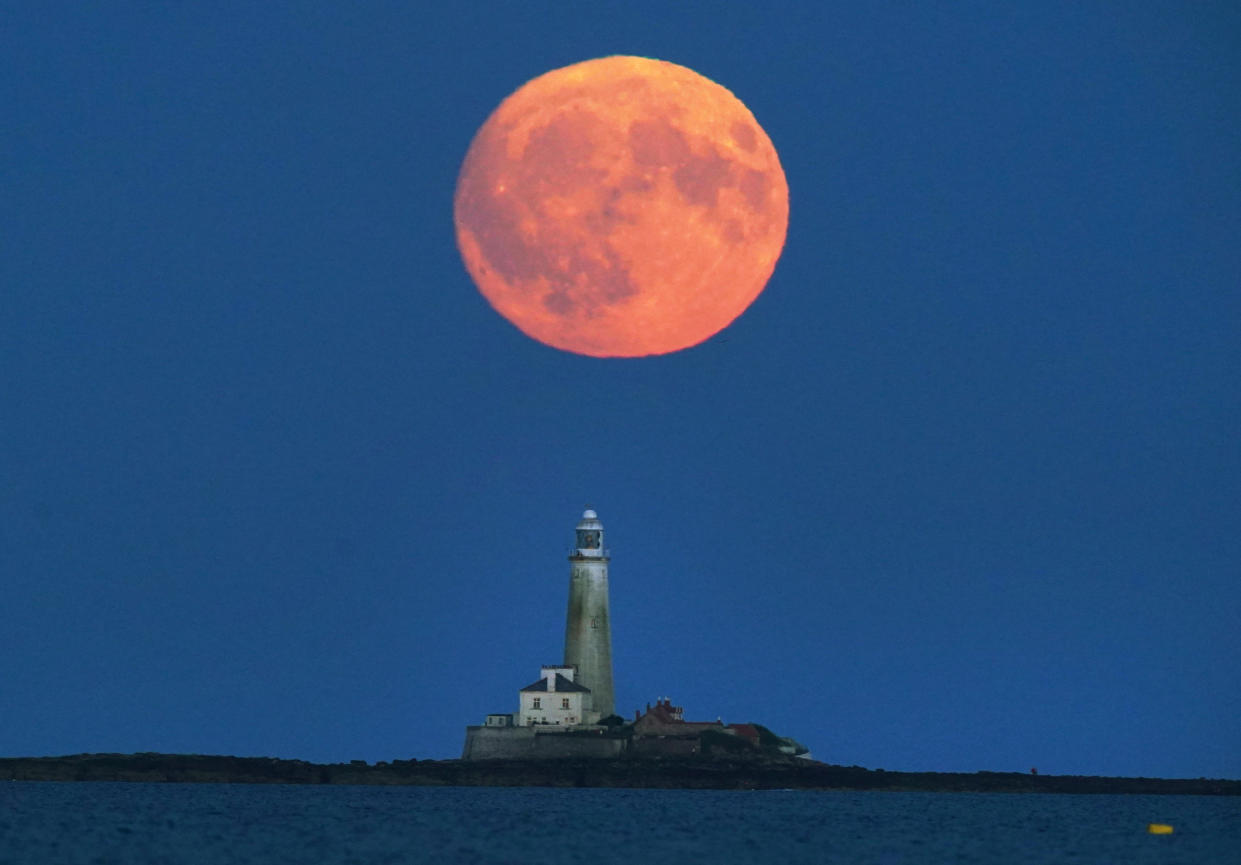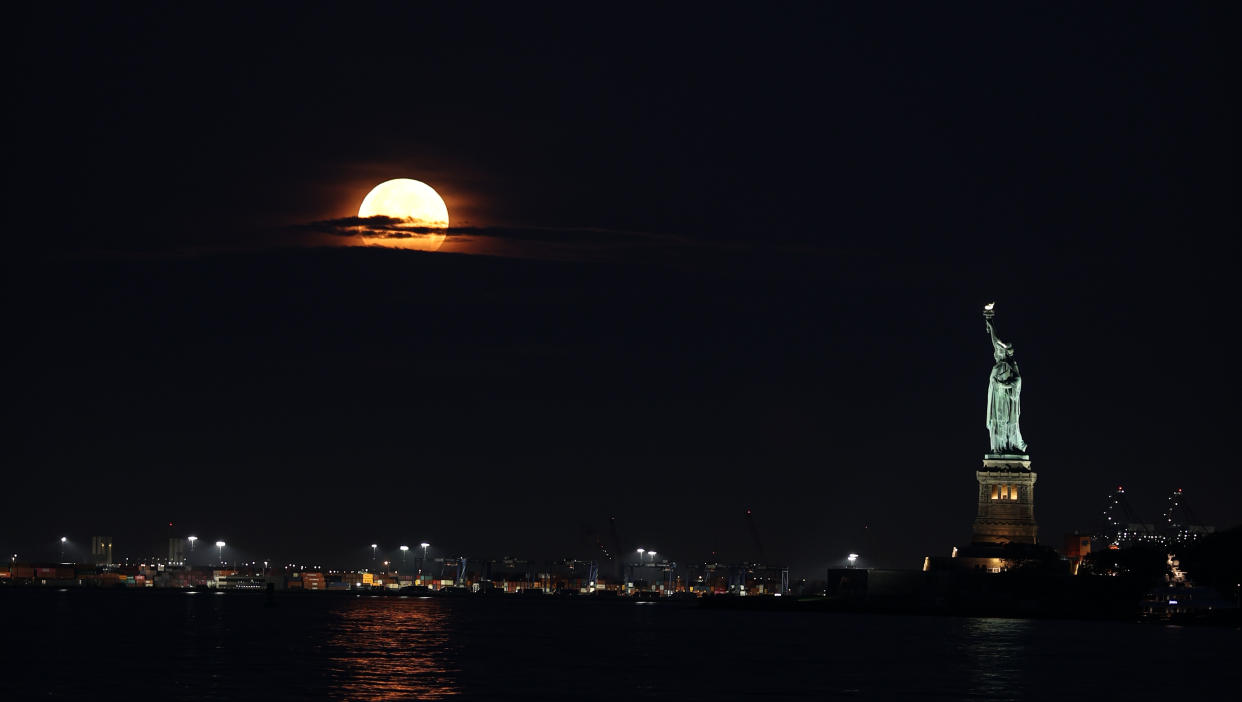Supermoon: When is it and how to see it in the UK?
You may notice the full moon appears larger and brighter than usual tonight - that's because it’s what's known as a supermoon.
The natural phenomenon usually only happens a few times a year, however there will be four supermoons each year between 2020 and 2025, according to the Natural History Museum.
While you can expect this one to be full and bright, the most spectacular full moons only occur a few times a century - and you've got another decade to wait for the next.
The last time this happened was in November 2016, when the moon was the closest it had been to earth since January 1948. The next time it will be that close will be 25 November, 2034, but the closest full moon this century will occur on 6 December, 1952.


What is a supermoon?
A supermoon occurs when that month’s full moon is closer to the Earth than usual, and therefore appears to be a bigger and brighter full moon.
During the moon’s orbit of Earth, it can be anywhere between 360,000 to 400,000 kilometres away. When it’s at its furthest point away from Earth, it can be called a ‘micro moon’.
A supermoon, which only occurs a few times each year, casts around 30% more light than a regular full moon due to more of the sun’s rays reflecting off its surface. A supermoon can also appear larger when rising or setting on the horizon because we have objects like trees and mountains to compare it to.
2023 supermoon dates
There will be four supermoons in 2023. These fall on:
3 July
1 August
31 August
29 September
How to see a supermoon
The supermoon on 3 July (also known as the Buck Moon) will rise at 10.14pm. The only way you will see it is if there are clear skies. It should be easy to see by looking up at the sky, but you can make your way to a higher vantage point with less light pollution if you want a clearer view.
How a supermoon affects health
While the moon affects the Earth’s tides, it’s also been said to have an effect on our moon and sleeping patterns - but how much truth is there to these claims?
A small-scale study from 2013 looked at the impact of a full moon on human sleep cycles and it found that, during the time of a full moon, deep sleep decreased by 30%, it took participants five minutes longer to fall asleep and total sleep duration decreased by 20 minutes.
A separate study from the US Department of Justice that was published in 1978 found that the moon’s "gravitational influence brings about social tension, disharmony and bizarre results".
Read more: Mercury is in retrograde right now – here’s how it might affect you - Yahoo Life UK, 4-min read

A third study from 2011, published in the World Journal of Surgery, found that 40% of medical staff believe that lunar phases can affect human behaviour.
"The concept of a supermoon affecting one's mood or behavior is largely based on anecdotal evidence, popular beliefs, old wives tales rather than scientific research," Liberty Mills, an Integrative Health and Nutrition Professional, says.
"While some people claim to experience heightened emotions or changes in mood during a supermoon, there is no actual scientific consensus or solid peer reviewed research or published papers supporting these claims."
Mills adds that there is limited scientific research examining the impact of a supermoon on sleep patterns.
"Sleep disturbances can be influenced by various factors such as stress, environmental conditions, and personal health," she continues. "While some individuals may report difficulty sleeping during a supermoon, it is likely attributed to other factors rather than the celestial event itself.
"In terms of health effects, there is currently no scientific backing for any direct impact of supermoons on human health. The gravitational pull of the moon does have an effect on Earth's tides, but its influence on human physiology is negligible. It is worth mentioning that some studies have explored potential links between lunar cycles and certain medical conditions such as epilepsy or psychiatric disorders, but the results have been inconclusive and require further investigation."
Watch: First supermoon of the year shines over London


